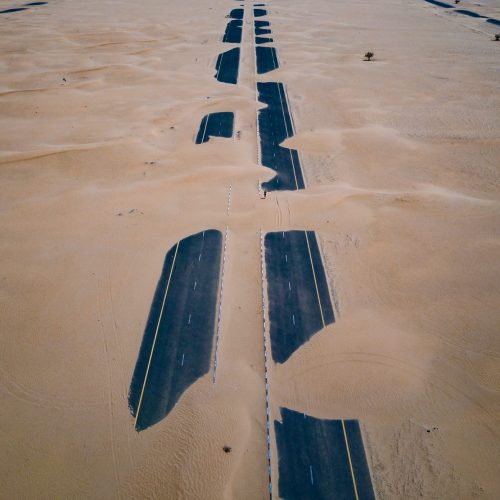If we don’t design for the future, we risk becoming irrelevant. It’s that simple.
Look around you. In your office, down your street, around your city – how will these spaces thrive in the future? Will they even survive? Our industry is at the very core of change for the future. A future of seamless mobility, unexplored energy and personalised spaces, but to become Future Ready, we need to stop thinking, planning and designing for now. Our generation is on the precipice of a fundamental shift. Imagine your time becoming your own, the ability to work less but achieve more, having unlimited mobility, unconditional access to healthcare, education and boundless connectivity. It is all very well watching the world change around us with interest, but how do we, as members of society, ensure that this potential becomes a reality in your office, down your street, around your city?
In every facet of our lives, our expectations are rising. We want to be in the office less, spend less time travelling from one place to another, we want our place of work to be more like our home – with our favourite coffee, somewhere to exercise and somewhere to sleep. We want our entertainment, health treatments, social space and nature fix right on our doorstep. We want our retail to know us, understand us and offer us a faster and more tailored service. We want to release ourselves from the burden of carrying out mundane tasks like grocery shopping, school runs, and wasting time in waiting rooms. We want our time back! Although it entails big changes to our attitudes, infrastructure and communities, surely, we can all agree that having more time to engage in meaningful communication, having the ability to avoid stressful situations and to genuinely feel in control of every aspect of our day has got to be worth the commitment now?
To achieve this paradigm shift we must be open to and embrace, not fear future technologies.
To achieve this paradigm shift, we must be open to and embrace, not fear future technologies. Previous generations feared the automobile because people drove them without the aid of a second intelligence, otherwise known as a horse. We now fear driverless cars because people are not in control, despite distracted drivers and human error being the number one cause of road accidents today. This alone should be enough to signal the need for cities, not just individuals or businesses, to embrace future technologies, either that or they risk becoming obsolete – if your city was the only city that couldn’t accommodate seamless transport, or prevented you from optimising your workspace and offered no access to green space – would you stay, would you expect your family to stay?
Cities and the people within them can thrive if our technology and infrastructure is properly planned, but this needs to happen now
we cannot wait. The rate of change is so rapid, and new technology so disruptive that we need to channel humanity’s historic adaptability today more than ever. Previous ‘industrial revolutions’ took decades to manifest themselves, we are now witnessing the ‘fourth industrial revolution’ and technology is changing every day with unimaginable limitations. Almost daily a new app, service or gadget becomes available, changing the way we live in some way or another.
Last year WSP conducted a global survey A Tale of our Cities using some of our 50,000 engineers, planners, scientists and consultants to undertake a qualitative assessment of strategic land use, infrastructure and technology planning frameworks, for major cities around the world to determine just how ready we are for what’s to come in 30, 50 or even 100 years’ time. The survey took into account factors such as how connected a city is, how sustainable a city strives to be, and how advanced it’s technological infrastructure is. The purpose of the survey was to understand which global cities are looking beyond the more obvious current indicators of how ready we are for the future now what they are doing to get themselves ready for the ongoing revolution.
The survey highlighted that buildings of the future will need to be ready for a rise in temperatures and unpredictable weather, a massive advancement in the use of day to day artificial intelligence, a growing population with increasing life expectancies and an unavoidable change in the natural resources we use.
We need to design, intelligent, innovative and secure buildings that can adapt to changes. Buildings need to be designed with durable and adaptable materials, and they need to use as little energy as possible with minimal consequence to our current way of life. But buildings will need to more than that; they need to increase our sense of community and support us in our need for safety, human to human connections, green space and convenience.
Our roads will need extensive remodelling to fully facilitate the capability & change to automated vehicles. Our roads and our vehicles will need to communicate with satellites, with every vehicle having a set place and destination, ultimately streamlining your commute, reducing accidents and increasing security.
But to get there, we must anticipate the future now.
But to get there, we must anticipate the future now.
It’s becoming more and more evident that we need to plan and design our buildings & infrastructure to be able to change and adapt to future requirements; if autonomous vehicles become the norm and we no longer own cars what happens to the millions of square meters of parking structures dotted around our global cities?
Although thought leadership draws our attention to what could be, one of the main challenges preventing the adaptability of buildings and infrastructure is the investment required to design and construct for the future. We live for the here and now, and we design and construct in the same way, developers and investors want to achieve the quickest return on investment and we design and construct to achieve this goal by optimising the use of space and by using tried and tested designs and technologies again and again. The industry is not ready, nor is it incentivised to design and construct for the future.
So how do we get the industry and our communities to think about what’s ahead? Firstly, we must open the dialogue about the future and present solutions that allow for developments to remain resilient and even thrive in uncertain times. A practical step would be to legislate and incentivise the adoption of new technologies. Currently, developers are content with their buildings having an expiry date of 25 years – it doesn’t make economic sense for them to design beyond that, or so they think. For example, we are able to now build residential buildings with walls and in some cases floors that are relatively easy to move, meaning in 25 years’ time when people are calling out for big and open communal office spaces in the same building as their home, developers could extend their spaces and ultimately the attractiveness of their property for decades.
If we can engrain more technology and advanced techniques into the construction industry, we will likely see a shift in attitudes. Currently, from the moment a project is proposed it can take a few years to be designed, built and become operational, meaning by the time a new mall or sports stadium is ready for business it already has components that are out of date and not optimal for a structure with differing demands in years to come.
With the rate of change in technology, anything is possible.
We can 3D print a building; we can use robots to complete time-consuming tasks, and we can use augmented and virtual reality to see the outcome before we even begin to build. Our era of advancement is indeed unprecedented, but so is the rate of change in people and their expectations. We don’t need to simply adapt for new technology; we also need to adapt to the changing landscape of the industry, our communities and the environment around us – only then will we truly be ready for the future.


